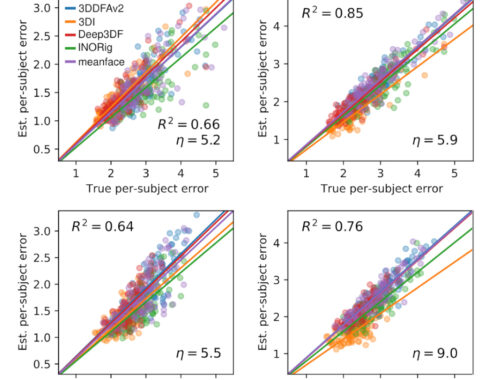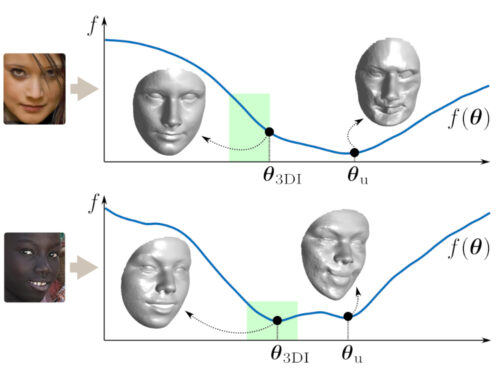SyncRef: Fast & Scalable Way to Find Synchronized Time Series
In CVPR’20 presented a new method (with code) for finding the largest subset of synchronized time series from a given set of time series. Specifically, we aim to find the largest subset of time series such that all pairs of in the subset are correlated at least by a (given) threshold value $\rho$. This is an NP-hard problem and the exact solution is, in general, unfeasible. We propose a new method, called SyncRef, for finding an approximate solution in an efficient and scalable manner.
Codebase of the method: https://github.com/sariyanidi/SyncRef
Paper of the method: (CVPR’20 link)
Figure 1 illustrates how the method works in an example scenario.

Figure 1 illustrates how SyncRef finds a synchronized set of sequences. (a) A face video of 100$\times$100 frames. (b) Input to SyncRef: The set $X$ of 10,000 sequences, where each sequence corresponds to the optical flow magnitude of a pixel w.r.t. the first frame. (c) Illustration of the PCA representation of sequences in (b); for visualization we use two PCA coefficients $u_1$, $u_2$. Each rectangular region, defined by dashed lines (i.e., thresholds $θ^j_k$ ), is a cluster. $C_j$ is the most populated cluster. (d) The $\epsilon$-expanded cluster $C^j_\epsilon$ . (e) The identified synchronized set $S\mathcal S$; all points within the circle are correlated at least by $\rho_θ = 0.80$. (f) The synchronized set of sequences illustrated back on the time domain: Those sequences correspond to pixels around the mouth region activated with the smile in (a).
The method was validated on data from three different domains: Video data (pixel movements), stock market data, and brain data. It was shown that the method can find synchronized time series hundreds of times faster than an alternative method based on (approximate) discovery of maximal cliques on graphs.
More about the method and the experimental results be read in the paper.




